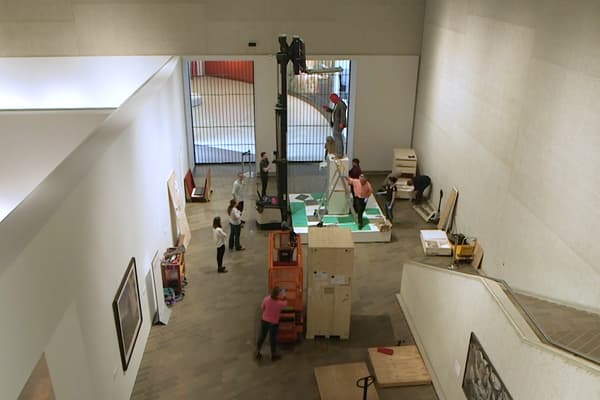Time-Based Media Art
///national-gallery-of-australia/media/dd/images/20191213_Urs_Fischer_New_0023.jpg)
Urs Fischer, Francesco, 2017, National Gallery of Australia, Kamberri/Canberra, Purchased with the assistance of the National Gallery of Australia Gala Fund 2019. © Urs Fischer. Courtesy of the artist and Sadie Coles HQ, London.
Time-based media art describes works of art that are dependent on time, duration, or function. This includes: video, film and audio artworks that have a duration; installation artworks; and artworks that function only for the duration of their time on display, such as computer-based and mechanical works of art.
The wide range of complex technologies used to create works of art like these pose unique challenges as the hardware and software are specific to the technologies available at the time of manufacture. The role of a Time-Based Media Conservator is to assess the long-, medium- and short-term changes that an artwork may undergo because of changing technologies, practices, and environments. At the National Gallery this includes: migrating and digitising audio-visual films and videos; repairing, and organising replacements for mechanical works of art; preparing time-based works of art for display or loan; providing on-going maintenance for complex works of art on display; and undertaking extensive documentation.
Time-Based Media Artworks
On demand videos
-
Published 2019
-
Published 2019
-
Published 31 August 2021
-
Published 11 March 2014
-
Published 26 March 2013
-
Published 15 March 2022
-
Published 2020
-
Published 26 August 2021












///national-gallery-of-australia/media/dd/images/85677_-_StC_Preview_JPG_2000px.jpg)










